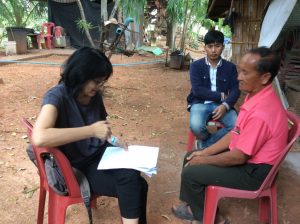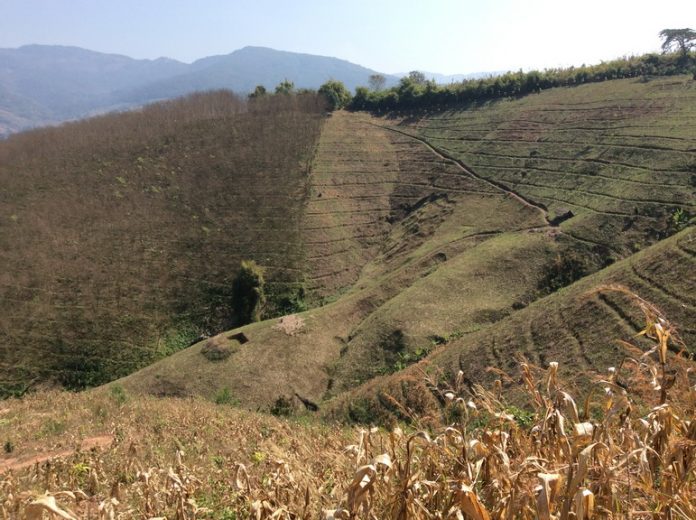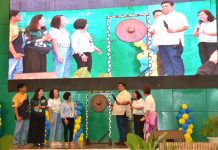They are called soil doctors and one of their main tasks is to disseminate information about soil conservation methods. Actually, they are appointed by the Land Development Department (LDD), the only agency in Thailand whose mandate is directly involved with land degradation.
The LDD initiated the program in 1995. Soil doctors are selected from a group of farmers who “are in good health, at least 20 years of age, keen on land development activities, residing in the concerned areas, and willing to work with the LDD.”
Oftentimes, soil doctors have been selected from community leaders or farmers who have successfully adopted some sustainable land management (SLM) practices, according to Rawadee Jarungrattanapong and Orapan Nabangchang.
Jarungrattanapong and Nabangchang are both with the School of Economics at the Sukhothai Thammathirat Open University. They co-authored a new report, “Socio-Economic Dimension of Adoption of Sustainable Land Management.”
“Since there is one soil doctor for each village, the LDD staff has a channel to communicate information about soil conservation at the very grassroot level,” the two authors wrote.
Although soil doctors work under the supervision of LDD, they do not receive a salary from the government. They are treated as volunteer workers.
 However, “each soil doctor is provided with a soil testing kit and undergo training on how to use it. They also receive materials such as bioactivators and seeds of green manure plants, which they can distribute to farmers in their village,” they wrote.
However, “each soil doctor is provided with a soil testing kit and undergo training on how to use it. They also receive materials such as bioactivators and seeds of green manure plants, which they can distribute to farmers in their village,” they wrote.
According to the two authors, the program work so well because of the dedication of most of the soil doctors. “In fact, it works so well that many soil doctors are overloaded with multiple tasks of coordination with the LDD and sharing and disseminating information to fellow farmers,” the two noted.
It is their role of being a link between farmers and the LDD personnel that makes soil doctors very important as “a change agent.” The two authors explained: “Since soil doctors are themselves farmers and also living in the village, their fellow farmers can have full access to information about SLMs as well as the material support they may need to adopt SLM practices.”
The United Nations Convention to Combat Desertification (UNCCD) has identified SLM as one way to mitigate environmental damage caused by land degradation. SLM practices “help close yield gaps and enhance resilience of land resources and communities that directly depend on them while avoiding further degradation.”
The soil doctors have been cited as one of the reasons why most farmers in Chiang Rai province, located in the north of Thailand, adopted SLM innovations.
“Of the total 580 parcels surveyed, 177 parcels have switched to mixed cropping,” the two authors reported. Other common practices include hillside ditches, terracing and contour hedgerows. Some farmers even adopt a combination of various SLMs.
“Any of these common SLMs can be adopted together with other practices such as intercropping, application of green manure, composting, rotating crop production and little or no tillage,” the two authors said.
Aside from Chiang Rai, surveys were also conducted in two other provinces: Khon Kean (in the northeast region) and Suphanburi (central region). All in all, over 600 households were selected for the study, which part of a collaborative effort of the ELD (Economics of Land Degradation) Initiative and Economy and Environment Program for Southeast Asia (EEPSEA).
In Thailand, land degradation comes in the form of erosion, salinity and acidity of the soil. Land degradation, the LLD said, “is the reduction of the soil productivity formed by natural processes and human activities which degrade soil properties in both quality and quantity.”
In Khon Kean, farmers included in the survey were those who adopted at least one practices to mitigate saline soil problem like green manuring and crop rotation. In the case of Suphanburi, which is known for rice production, selected farmers were those who adopted either organic farming or good agricultural practices.
“There is a need to increase economic incentives for farmers to adopt SLM techniques,” the study suggested. It added that LDD should provide farmers with information on the costs and benefits of SLM adoption in addition to information on SLM techniques.
Another recommendation: soil doctors must be provided with adequate incentives aside from reassessing their workload. “During our brief interactions with soil doctors, we found out that not all soil doctors are hard-working and there are those who feel overburdened and undercompensated,” the authors pointed out.
The two authors also suggested that the principle of cost-sharing be applied to all types of SLMs and to all provinces. “Being used to receiving free assistance, farmers will not welcome this change,” they noted. “How receptive they are will depend on how well-informed they are of the costs and benefits of SLM adoption.”
If financial support is to be provided at all, it should be address the shortages of materials needed for SLM adoption, the two authors contend. “Farmers in all three study sites mentioned that they face shortage of materials,” they wrote, referring to acacia seeds, seeds of green manure crops, organic waste for making compost, and cow manure, among others.
Finally, the two authors also suggested that ongoing policies that contradict the goal of organic promotion be reviewed. For instance, while LDD is promoting organic farming, other government agencies are distributing chemical inputs at subsidized prices.
“It is no wonder that chemical inputs are still being used among SLM adopters in the three study sites,” the two authors concluded. “This is a clear indication that the concerned government agencies need to synchronize their goals and approaches.” (Photos courtesy of Kanya Suthat)







